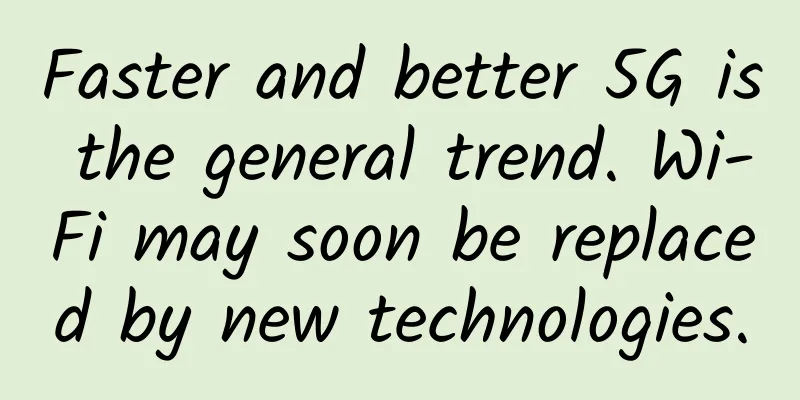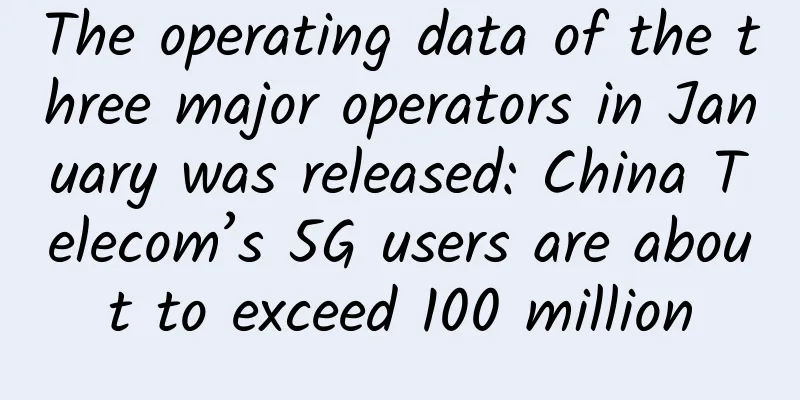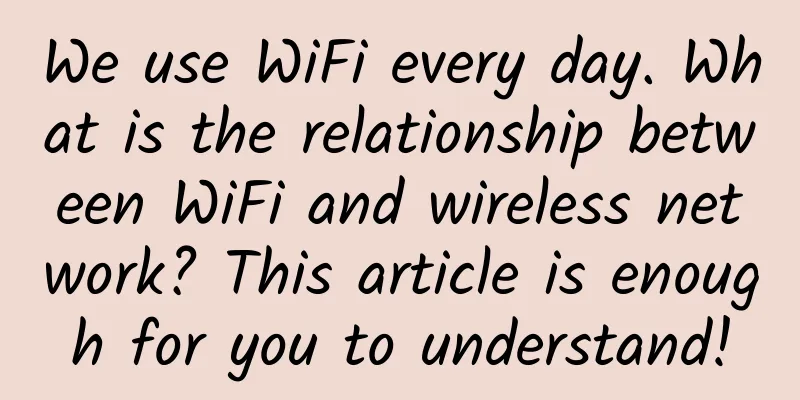Faster and better 5G is the general trend. Wi-Fi may soon be replaced by new technologies.

|
From phones to smart thermostats to TVs, there's a "Wi-Fi" icon on nearly every internet-connected device. But it won't be long before WiFi is forgotten. Currently, major mobile operators in the United States all provide 400% data traffic services, and consumers no longer need to turn on Wi-Fi networks to avoid expensive traffic charges. This is a major change that may cause WiFi to exit the stage of history in the future. In addition, the emergence of some new technologies has also made the prospects of WiFi bleak. It is expected that in the near future, the proportion of consumers' use of WiFi in public places (such as stadiums and airports) will drop from the current 1/2 to 1/3 of the total mobile data traffic. Barry Gilbert, an analyst at research firm Strategy Analytics, said that this means that companies will no longer upgrade public WiFi access, and consumers will not even turn on the "Wi-Fi" function. "At Sprint, 400 million data plans are standard, and consumers no longer need to use Wi-Fi to watch videos," said Craig Moffett, an analyst at research firm MoffettNathanson. "Consumers are rational, and when price incentives favor WiFi, they use Wi-Fi more. When price incentives shift, consumer behavior changes accordingly." Of course, the erosion of Wi-Fi's influence may be a slow, bumpy process. *** Data traffic services make WiFi irrelevant for mobile phones, but other devices in the home, from MacBooks to Amazon Echo, still use WiFi to connect to the Internet. In addition, in some office buildings or family homes where there is no mobile signal or the mobile signal is unstable, WiFi is also needed to supplement. But private data traffic isn't the only threat to Wi-Fi, which has been around for 20 years and has spawned a $20 billion industry. But now it's facing challenges from other emerging technologies. Wi-Fi alternative: LTE-U For example, a new system called "LTE-U" (LTE in Unlicensed Spectrum) uses unlicensed spectrum to increase available network traffic for cellular data communications, which is a technical solution for deploying LTE on WiFi bands. In the past few decades, unlicensed spectrum has been used primarily for things like garage door openers, cordless phones, and baby monitors. But today, it's being used across Wi-Fi networks, connecting smartphones, laptops, set-top boxes, video game consoles, and a host of other smart devices connected to the internet. As LTE-U becomes more common, Wi-Fi may take a back seat. For users, they can switch seamlessly between the cellular network and the LTE-U network without noticing any changes. On current public WiFi networks, users have to enter passwords every time they log into different networks. LTE-U also requires fewer devices to support it. For example, a 180,000-square-foot building would only require 24 new access points, compared to 80 hotspots for Wi-Fi. "LTE will go into homes, into businesses, and Wi-Fi will be phased out," said Chetan Sharma, an independent wireless analyst. Wi-Fi alternative technology: CBRS Another new technology that could pose a threat to WiFi is called CBRS, or Citizens Broadband Radio Service, which would allow anyone to share a large portion of the spectrum currently used by the U.S. Navy. CBRS uses the 3.5GHz frequency band, which is an unlicensed band in the United States and is currently used by the U.S. Navy for radar applications. But since 2013, Google and other companies have been lobbying the Federal Communications Commission (FCC) to open the band for mobile broadband applications. In August 2016, Google, Nokia and Qualcomm officially announced their collaboration to conduct 3.5GHz network research. In February of this year, the three companies conducted the first live demonstration of a private LTE network using 3.5GHz shared spectrum on the Las Vegas Freeway. Michael Peeters, president of the CBRS Alliance, said CBRS is more reliable than Wi-Fi and could be a better choice for places like factories, airports and ports. 5G becomes the killer app Of all the threats, 5G could be the killer app for WiFi. Under 5G standards, consumers will be able to download a high-definition movie in less than a second. By using CBRS, mobile operators can deploy 5G networks faster and more easily because they can use the shared 3.5GHz band without having to obtain spectrum licenses through auctions or other transactions. In the near future, WiFi may disappear from people's daily lives. "Before, I had to find a WiFi hotspot, which was inconvenient for me," said Michael Kimbroug, an entrepreneur in Alabama. "Now, I don't have to do that anymore." |
Recommend
5 Things That Can Slow Down Your Wi-Fi Network
Wi-Fi networks can be slow due to the use of olde...
Broadband speed increase is in earnest: starting from 100M in big cities!
The government's plan to increase speed and r...
Verizon adds three new regions to its 5G mmWave service
Verizon's 5G millimeter wave network is now a...
UK: Infrastructure cannot keep up, 5G application progress is slow
According to reports, 5G deployment in the UK is ...
Seven QoS best practices for monitoring cloud traffic
The recent maturation of technologies such as hig...
Learn RTMP and RTSP streaming protocols in seconds
RTMP and RTSP are two common streaming protocols....
Did you understand the three stories Guo Ping told at the Huawei Connect Conference?
[51CTO.com original article] Just last week, the ...
Faster network/lower latency Wi-Fi 6E is released: stronger than Wi-Fi 6
As 5G technology develops rapidly, Wi-Fi technolo...
Finally someone explained the role of OSI and TCP clearly
I have mentioned the OSI reference model and the ...
A 10,000-word article interprets the operators' fight for 5G: a battle of three kingdoms in financial strength
For a long time, the development of high-tech com...
5G architecture innovation is obvious and the bearer network should fully support it
5G will become one of the hot technologies in the...
Linkerd 2.10 (Step by Step)—Install Multi-Cluster Components
[[406693]] The Linkerd 2.10 Chinese manual is bei...
Kunpeng Technology Open Day came to Shenzhen Futian to see how cloud-intelligence integration will open up the future
[51CTO.com original article] At 2:00 pm this Satu...
5G will revolutionize the Internet of Things, but not soon
5G technology is the most anticipated network upd...
WeChat PC version 3.0 official version detailed experience: friends' permissions are more convenient to view
WeChat PC version 3.0 is here, and this time two ...









